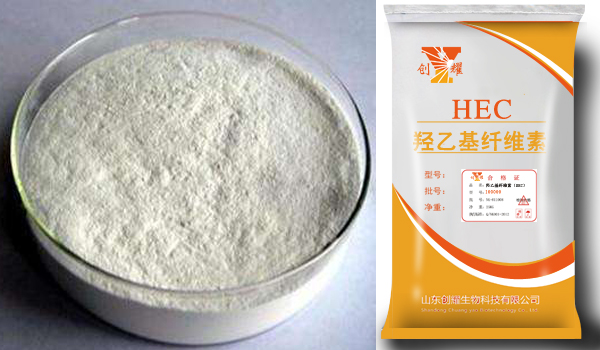Summary of the methods of producing hydroxyethyl cellulose by hydroxyethyl cellulose manufacturers
Due to its unique properties (no gel temperature, high viscosity, strong solubility, stable liquid state, etc.), hydroxyethyl cellulose has been applied in more and more fields, and the market demand is also increasing. Different hydroxyethyl cellulose manufacturers produce hydroxyethyl cellulose products in different ways. The following five methods are the basic processes for domestic hydroxyethyl cellulose manufacturers to produce hydroxyethyl cellulose.
1. Hydroxyethyl cellulose (HEC) is a kind of natural polymer material. Each fiber ring contains three hydroxyl groups. The most active hydroxyl group reacts to form HEC. Soak the raw cotton linter or refined pulp in 30% liquid alkali, take out and press it after half an hour. Cases were crushed to 1:2.8. The crushed alkali cellulose is put into the reactor, sealed, vacuumized, filled with nitrogen, repeatedly vacuumized and filled with nitrogen to replace the air in the reactor. The crude hydroxyethyl cellulose was obtained by pressing the precooled ethylene oxide liquid, introducing cooling water into the reactor jacket and controlling the reaction at 25 ℃ for 2 h. The crude product was washed with alcohol, neutralized with acid to ph4-6, and then aged with glyoxal. Then wash with water, centrifugally dehydrate, dry and grind to get hydroxyethyl cellulose. Raw material consumption (kg / T) of cotton linter or low pulp 730-780 / liquid alkali (30%) 2400 / ethylene oxide 900 / alcohol (95%) 4500 / acetic acid 240 / glyoxal (40%) 100-300.

2. Soak the raw cotton linter in 30% alkali solution, take it out for 0.5h, press it to the ratio of alkali water 1:2.8, and crush it. The crushed alkali cellulose is put into the reactor, vacuumized, filled with nitrogen to replace the air in the reactor, and pressed into the precooled ethylene oxide gas liquid. The jacket of the reactor is filled with cooling water, and the reaction is controlled at 25 ℃ for 2h to obtain the crude hydroxyethyl cellulose. The crude product was washed with alcohol, neutralized with acid to pH 4-6, and then crosslinked with glyoxal. Then wash with water, centrifugally dehydrate, dry and grind to get hydroxyethyl cellulose. Each ton of product consumes 750KG of cotton pulp, 900kg of ethylene oxide, 250kg of acetic acid, 2600kg of alcohol and 400kg of solid alkali.
3. Soak cotton linter or refined cotton pulp in 30% alkali solution. Take it out and press it. Then, the crude hydroxyethyl cellulose was prepared by grinding and reacting with the precooled epoxy coating. Then wash it with alcohol and neutralize it with acetic acid. Then add glyoxal for crosslinking and aging, and wash with water quickly. Finally, the finished product is obtained by centrifugal dehydration, drying and grinding.
4. Liquid phase method is Etherification in the presence of diluent. The technological process is as follows: after alkalization and pressing, the cotton linter reacts with EO in the presence of diluent for 1-3 h at 20-60 ℃, and the crude product hydroxyethyl cellulose HEC is obtained. Commonly used diluents are propanol, propyl alcohol, tert butanol or their mixtures. The product remained insoluble in the diluent. Two production processes, gas-phase and liquid-phase, need to prepare alkali cellulose in advance, that is, the cellulose is immersed in 18% NaOH solution at about 20 ℃ for degreasing, etherification reaction, neutralization, washing, drying and grinding, to obtain the final product.
5. Gas phase method: the gas phase method is to add additives or diluents in the reaction process, and alkali fiber and EO react in the gas phase. The technological process is as follows: soak and activate the cotton fiber in 18.5% NaOH solution, press and crush it, and then put it in the reactor. The reactor was vacuumized, filled with nitrogen twice, added with EO, and reacted at a vacuum of 90.64kpa and 27-32 ℃ for 3-3.5h to obtain hydroxyethyl cellulose HEC.
The properties of hydroxyethyl cellulose produced by different production processes of hydroxyethyl cellulose manufacturers are also different, which reminds users to test and select the matching products in the process of use.
{aspcms:comment}





